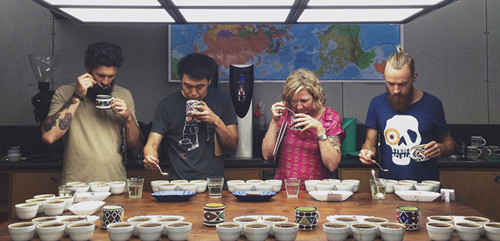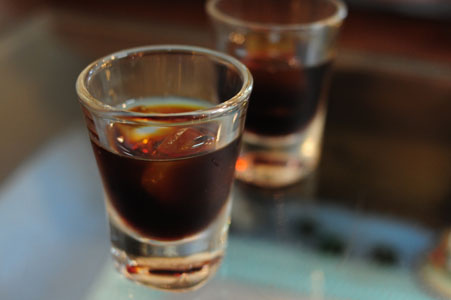Coffee Technical Operation: eight principles for judging Coffee by Cup timing
[introduction] the first principle: clean, clean when light, and clean when strong. It's like a room, it's easy to be clean when it's empty, but it has to be clean when it's full. The second one.
The first principle: clean, clean when light, and clean when strong.
It's like a room, it's easy to be clean when it's empty, but it has to be clean when it's full.
The second principle: spindle taste, that is, it represents the characteristics of this region. Cleanliness is the foundation, and an unclean cup of coffee represents a flaw, but clean coffee is easy to become tasteless, so it must have a spindle flavor. The taste of this spindle is from hot to cold, any cooking method, any baking degree. No shallow baking, no deep baking or no shallow baking, and the same is true of cooking.
The third principle: location, if there is a taste, there must be a place. If you say that there is the smell of wild flowers, then please mark the location of the smell. If it cannot be marked, then the taste may only be a written description of the cup test report and imagined by you.
The fourth principle is to move the path, the smell will not just be fixed in a certain position, the taste will move. If it is fixed in a certain position, then the smell is dead, and if it is the same from beginning to end, it is also dead. Good coffee is alive and leaves a foot in every place where it feels.

The fifth principle
Levels. The layers are arranged in a hierarchical manner, followed by an orderly arrangement. It's an orderly arrangement. The hierarchy includes at least 8 categories. Thickness, depth, weight, strength, thickness, width, rigidity and softness. Sticky thin
The sixth principle of richness and complexity, the so-called [richness]-the rich are more beautiful, and the rich are more beautiful, which refers to the sufficient and beautiful taste, complexity, heavy repetition and clutter, which means a similar and messy taste. All the good tastes are called rich, and the five tastes are called complex.
The seventh principle-texture, the so-called texture refers to-temperament, personality, texture, touch, etc. If you use the analogy of cloth, it will be more clear-silk, Luo, silk, satin, silk, velvet, cotton, hemp, cashmere, wool, acrylic silk cloth, polyester fiber, etc., different materials have different texture personality. it also distinguishes advanced, ordinary, gorgeous, simple, elegant, rough and so on.
The eighth principle-coordination, the so-called coordination means that one day there is earth, there is front and back, there is top and bottom, there is head and tail, and there is left and right.
Source: coffee bug
Important Notice :
前街咖啡 FrontStreet Coffee has moved to new addredd:
FrontStreet Coffee Address: 315,Donghua East Road,GuangZhou
Tel:020 38364473
- Prev

The caffeine content of common drinks such as espresso, black coffee, instant coffee and tea
[guide] how much is it? Depending on your body's metabolism, adults weighing 70kg normally drink less than 500mg a day, and it is recommended that you consume about 300-400mg of 4-6 cups of coffee a day. Cocoa Coca-Cola: 9.7 mg/100ml instant coffee Instant Coffee: 24.1 mg/100ml espresso Espresso Coffee: 173.
- Next

Coffee knowledge: the difference between American Coffee and Italian Coffee
The biggest difference between American coffee machine and Italian coffee machine is that American coffee is obtained by brewing and filtering coffee powder, while Italian coffee is obtained by high pressure extraction. Espresso is more mellow and mellow. American coffee and Italian coffee, from the choice of coffee machine, there is a most basic difference, that is, the American drip coffee machine is generally about 100 yuan, to drink good Italian style
Related
- What is the meaning of lactic acid fermentation with coffee bean treatment?
- How to judge the state of foam by sound?
- How does the latte pull out the unicorn pattern? Come to get for a little trick to improve the flower pull!
- Will flower pulling affect the taste of the latte?
- Do you know the history of coffee?
- The difference between honey treatment and sun washing what is raisin honey treatment?
- What kind of milk can a novice use to make coffee foam to keep the foam longer? The correct method and skills of milking tutorial sharing
- Why do washed coffee beans taste sour? Flavor characteristics of washed Coffee
- Introduction to the skill of how to practice the size and height of water injection around the circle of hand-brewed coffee
- How do beginners practice coffee flower drawing from scratch?

